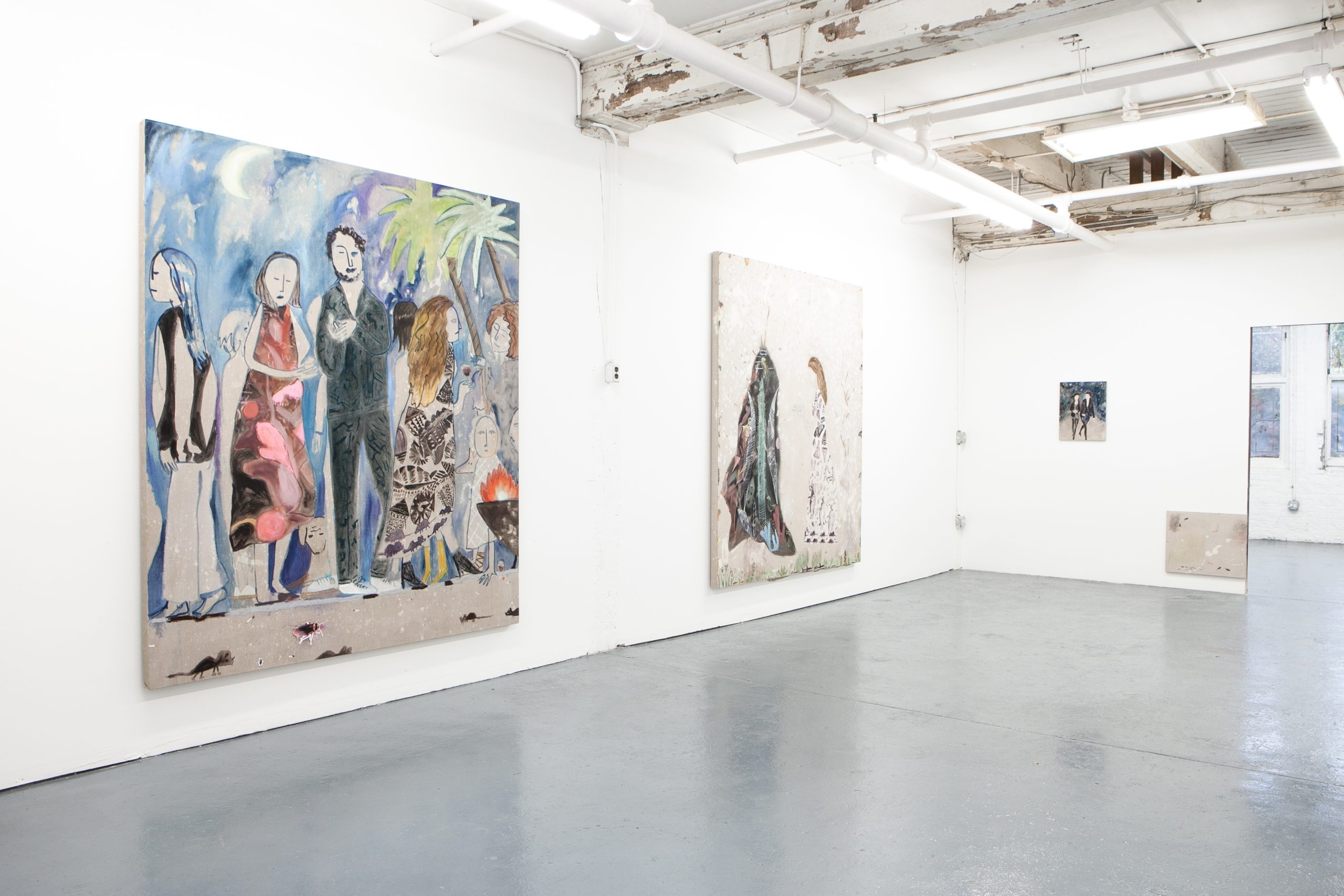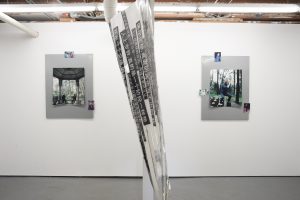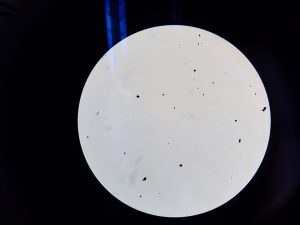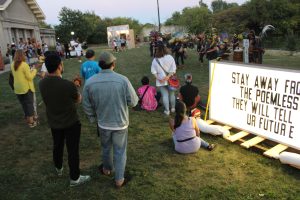A closure shouldn’t be a grave; it still contains potential, neither positive nor negative. It veers in all directions, in planes beyond the 2-dimensional. Danger and passion, ideally, run parallel in the sprint of culture-work. Risk has reward, sometimes touching and then separating. But what happens when they overlap completely?
“It is with some sadness but mostly, a deep sense of gratitude that I’m sharing the news that Goldfinch is closing […] I know that if tended carefully, the relationships and communities we form can endure,” wrote the former owner, Claudine Isé, of Goldfinch Gallery on Instagram. The gallery inhabited 3039 W Carroll Ave in East Garfield Park for the past ten years. The post continued to remark on personal health and wellness issues Isé was facing.

Blurry visages rebounded sampled sounds—scattered throughout the gallery in May 2025. The interdisciplinary work of Damon Locks sampled the failures of communications between visual and auditory, resulting in liberatory exclamations for “We Are Our People/Listen.”
“I didn’t realize it was the final show,” said Locks about his third solo exhibition.
Locks’ and Isé’s relationship began further back, around 9 years ago: he was a visiting lecturer for Isé’s class at the University of Illinois at Chicago. His lecture, as Locks recollects, focused on failure not as quitting but as learning for a future unfolding of eureka! moments. Their relationship grew from there.
“She was always really open,” said Locks about Isé’s commitment to supporting his multidisciplinary practice. His first exhibition included a wide-ranging musical performance: an example of Locks interlocking his prolific sound-career with visual works. He packed the house; deep hums symphonized percussives in a gangly, eager crowd. The pulse quaked. Silence was unheard.
The following exhibition was during the pandemic; quietness ensued. It was a foil to his first. Locks wasn’t leaving his apartment to go to the studio, so he collected materials he had: a pen, paper, pencil. The works were a collage that mirrored his sound-samplings and reflected a more intimate space necessary for social distancing. Goldfinch always respected his “vibrational energy,” even then, he said. As the climax, his final exhibition dealt with “recontextualizing the way people talk to each other,” and the “errors” that came along with that. Locks ended with a wistful, kind recollection: “[Isé] couldn’t have been more supportive.”
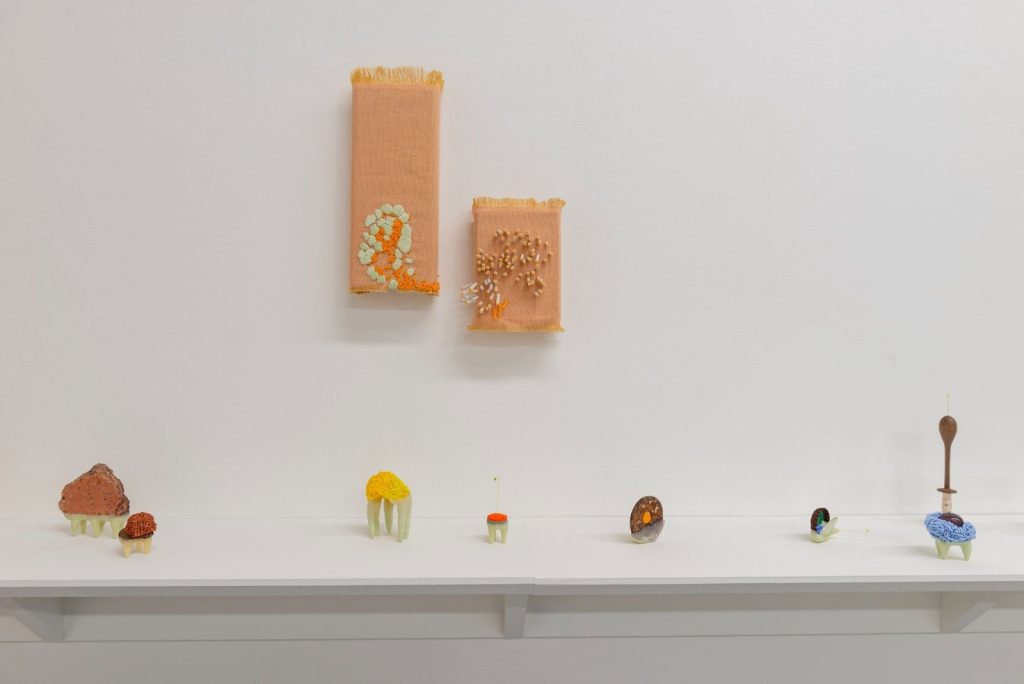
Physical and conceptual materials rebound into Goldfinch’s past, all placemarkers and harbingers of a space continually changing. Whether it was minuscule gestures or cursive brush strokes, a clamor bounced. It could’ve been a dropped hammer in a clatter to the ground, or a drill whirring as it secured a screw. Maybe the open window (to cool off the perspiring artists) ruffled a sheet of artist contracts. The intimate displays were always coupled with the filing of art business. Isé’s maneuvers pecked emerging artists’ cheeks.
That combusting and diffusing resonated in the work of Sofia Fernández Díaz. Globular and abject specimens inhabited “Y LUEGO BAILARON / AND THEN THEY DANCED.” Delicate, wax mini-sculptures dispersed autobiographical geographies in this solo show. Imagine hushed tones with fortuitous snickers; imperceptible scratches on a record.
Díaz said her solo exhibition developed especially because “Goldfinch was such a special ecosystem of what [Isé] did for these mostly emerging artists.” Isé even opened up a term for Díaz: semantic satiation. Isé defined the concept as, after a word or concept that is repeated over and over again, “we’re left with something akin to the pure materiality of language.”
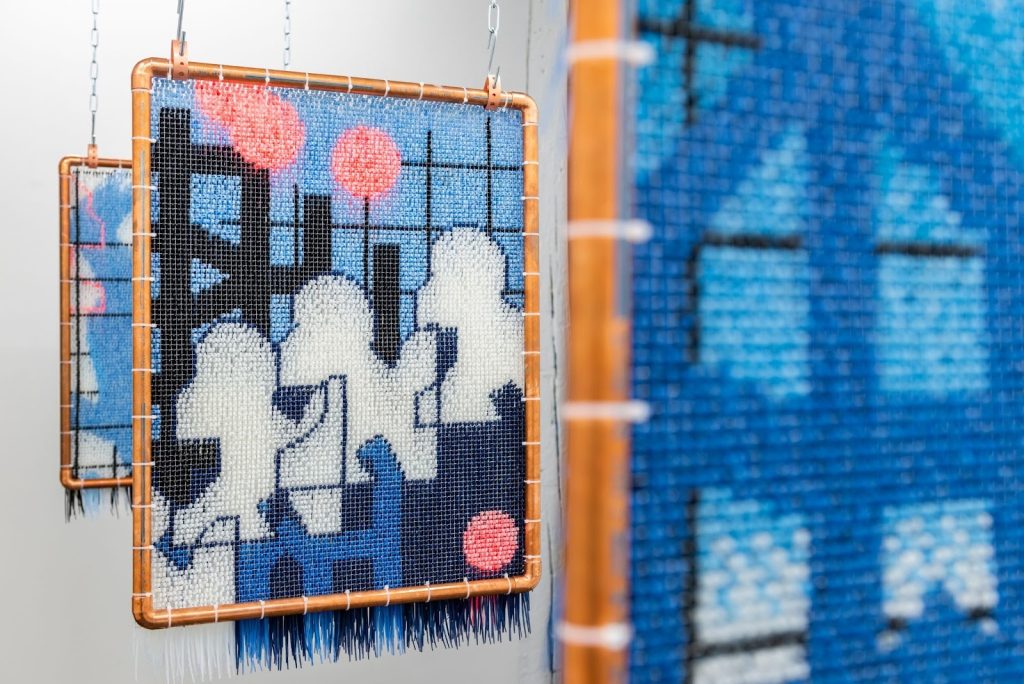
Perhaps Goldfinch always flurried past the 2-dimensional. Perhaps a dissonant time frame danced with a fishing line secured into a ceiling eye hook, swaying as a layout unfolded. Perhaps dust from drilled ceilings painted the art installer’s faces below. Perhaps sneaker squeaks, scooting on tiptoe, analyzed a choreography for the soon-to-arrive ensembles of viewers.
In one such case, spikes (zip-ties) cascaded a flamboyant deluge in the center of Goldfinch in 2023. Sarah Leuchtner’s habitual, repetitious practice was a stigmata for the everyday turned aesthetic in her solo exhibition, “Sequential Escapes.” The work was the nature of turning and flipping, and disguising. Leuchtner seductively obscured while paradoxically revealing—her geometric semiotics enforcing the stagnant turning evolving. One side was diffused color waterfalls—the other ornate symbology that remains wistfully unknown. Even though the copper frame memorializes, its static electricity flails in the tails of the zip-ties.
Back in an early studio visit with Isé, Leuchtner reflected on her experience with Isé as a neighbor in the Caroll building. The gallery director caught a hiccup in the chorus of the artist’s typical studio work: seeing a half-finished zip-tie extravaganza in a corner.
Imagine these exhibitions disappeared—the aesthetics of Leuchtner, Díaz, and Locks ceasing along with the reverberations of cultural discourse. Not to mention a gallery’s ten-year run highlighting emerging and established artists’ material praxis. This happened.

My conversations about Goldfinch’s legacy circumnavigated Chicago artists, curators, and all the art workers existing in the in-between. Some I officially interviewed, some not. They chorused as interconnected novelettes; my recollections of Goldfinch coincided as alluring visuals coupled with these oral histories. For me, they are all non-hierarchical snapshots: 5-by-5-inch windows. Now, I’m scrubbing to view the former-owner Claudine Isé’s relationships, theorizing, and experiences.
“It was a culmination of two decades of working in contemporary art,” said Isé in an interview. She “took the leap!” in 2016, when her husband moved to Chicago for work. She always had a “secret desire” to open a gallery while having a career in writing for local publications. So, she transformed her art experience into Goldfinch.
“I’m not attracted to polished, boutique types of galleries,” she said, as she was more interested in grittiness and rawness to showcase her oeuvre of artists. East Garfield Park was just that. She was attracted to the building at 3039 W Carroll Ave. for its support of artist studios and galleries. Several artists remain in the building today, along with the gallery Devening Projects that coincided with Goldfinch’s tenure. Despite Devening Projects, East Garfield Park wasn’t the typical neighborhood for galleries when Isé moved in (and still isn’t)—further east on Chicago Avenue is Rhona Hoffman, Document, Andrew Rafacz, Western Exhibitions, and several other heavy-hitter spaces in a row. In an interview, Goldfinch’s neighbor, Dan Devening, remarked on his space as “the first in the neighborhood,” scoping out a fresh scene that included low overhead and the antithesis to the typical white cubes of the art world. Like Isé later on, he saw it was different; it was more real.
From the social dynamics and sustainable economics at the Carroll Avenue building, Isé also found Chicago to be an easy place to open a gallery. “I made friends, like real friends, easily [in Chicago]. It just opened and opened and opened,” she remarked. In her eyes, she cast the city as an immediately familiar, easy-to-navigate networking opportunity: “people really like to get together and make stuff happen here.”

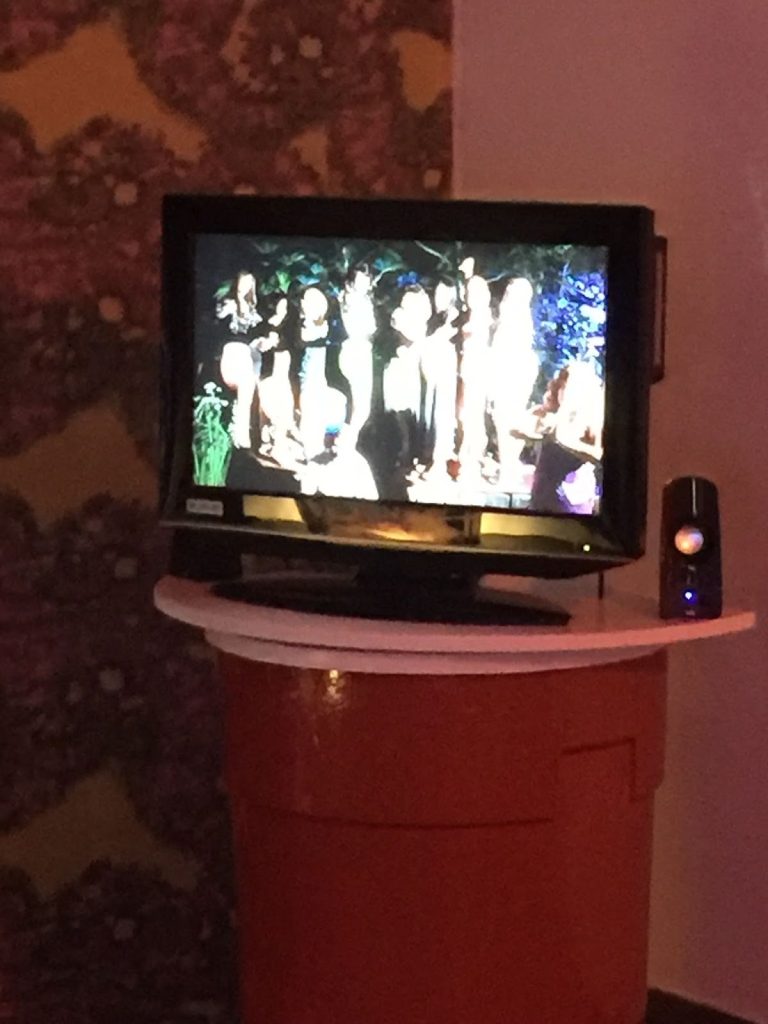
Within the this-person-knows-this-person realm of Chicago networking, Isé created a trifecta: raw space, business-savvy sense, and materially intelligent artists. Goldfinch always recommences into unmarred substance. “I’m not into ideas only—but things, physical, material things. I like ugly. But pretty ugly,” she laughed. Beyond objects and surfaces, Isé cultivated political reflections (although not always intentional)—always fitting with the current times. One of Goldfinch’s early exhibitions premiered after President Trump’s first election. “It was a blurring of reality,” said Isé of the “Sad Girls’ Club TV’s” exhibition in 2017. “It really dovetails well,” she remembers thinking about the spectacle of reality television in the work that reflected the uncanniness of the early Trump days. Trump’s fiascos weren’t the only influence surrounding: the pandemic provided challenges and opportunities as well. Isé had shifted to a more commercially-focused space by this point (she wanted to always “put money back into the hands of the artists”). She remarked that they were actually selling more work during lockdown, as people were spending more time beautifying their homes: “It was easy to social distance at [Goldfinch] as well.”
Even with her serendipitous and convivial nature in the interview, she sometimes reflected paradoxically on Goldfinch’s place in the Chicago scene. Wistful recollections also cacophonized financial issues and non-stop work hours. Eventually, this led to fatigue. Her motto was “grow, grow, grow, grow,” but her personal health concerns led to her realizing she “was very, very, very burnt out.” Isé constantly functioned as a business partner with her artists, seeing a gap in financial support for emerging and even established artists to keep their practices afloat. “We were dog-paddling,” Isé remarked on her need to keep her “head in the game” to keep supporting her artists because, “That’s the flip side to this beautiful Chicago community that we have. Is that when there’s not enough money flowing through it one way or another, it becomes hard?”
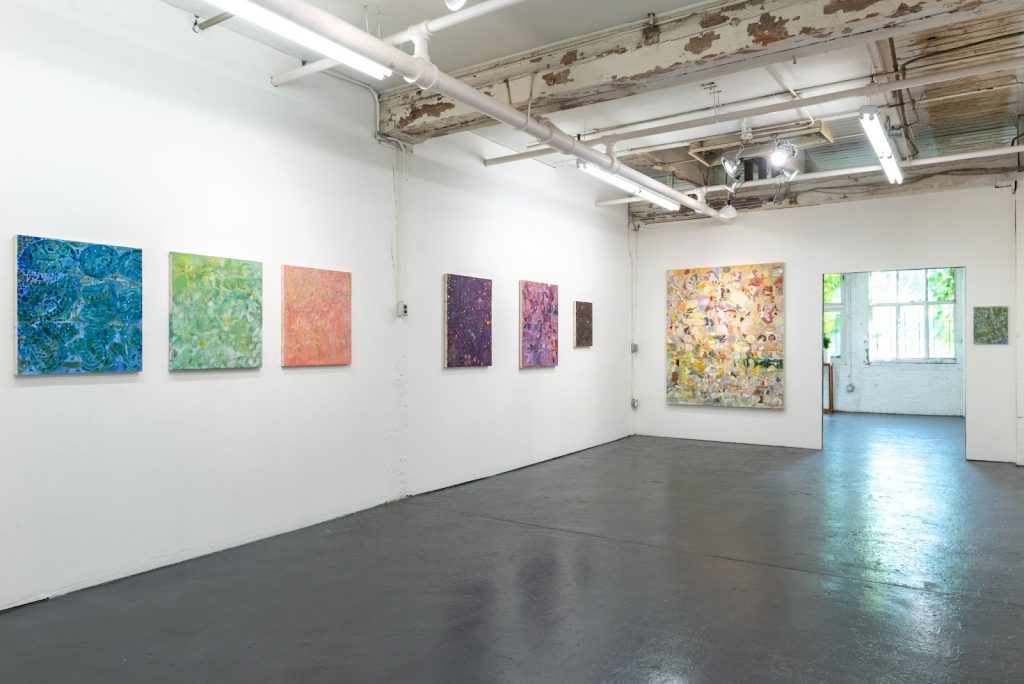
After my interview with Isé, I closed my laptop and recalled a quote from Martin Herbert: “You try the art world. It tries you in return. Eventually, you return to the real, and you help; in the eyes of those you’ve left behind, the purity of intent you couldn’t achieve before is now yours. And, you know, whatever.”1 Burnout spreads, a malaise flexes. Yet, there’s one thing to remember about Chicago’s particular environment: receding isn’t retreat. Even with local and global money-chagrin, trying is pausing. Trying is returning to the incubator. And here, it’s that chipping away of paint on Goldfinch’s windows that was pictured in Goldfinch’s final post: grittily hanging on.
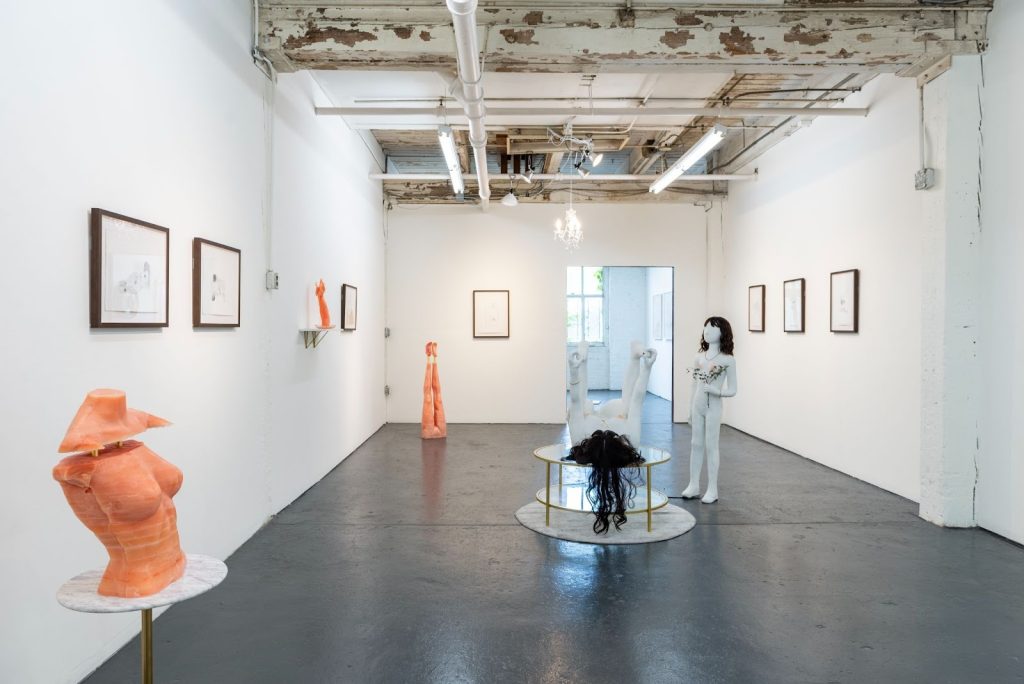
In a wider art-schematic, CNN reported that in 2024, global art sales plummeted 12%. Katya Kazakina of Artnews foresees the art world “in a precarious state as it heads into the second half of 2025.” Hyperallergic recently reported Hauser and Zwirner’s United Kingdom galleries as seeing a “90% drop in earnings.” Overall, pessimism and fear abound in stagnant markets, and, of course, fear surrounding the resurgence of MAGA and President Trump’s only beginning tenure. Earlier this year, the Trump administration made sweeping cuts to the National Endowment for the Arts (NEA) that had reverberations throughout the country, and in Chicago.
Yet, Chicago’s resilient in its own network—as demonstrated in the convivial ecosystem of art production, and even resilient sales at Expo Chicago this year.
“It doesn’t feel like the best time to be reaching out to galleries or trying to secure an upcoming exhibition,” said Leuchtner in an email follow-up to our interview. “But during a time like this, you have to keep the communication lines open […] Chicago cares about each other,” she wrote.
“There’s no other place I’d ever like to work!” Isé concluded.
Footnotes
1 Herbert, Martin. “Tell Them I Said No.” Berlin: Sternberg Press, 2016. P. 196.
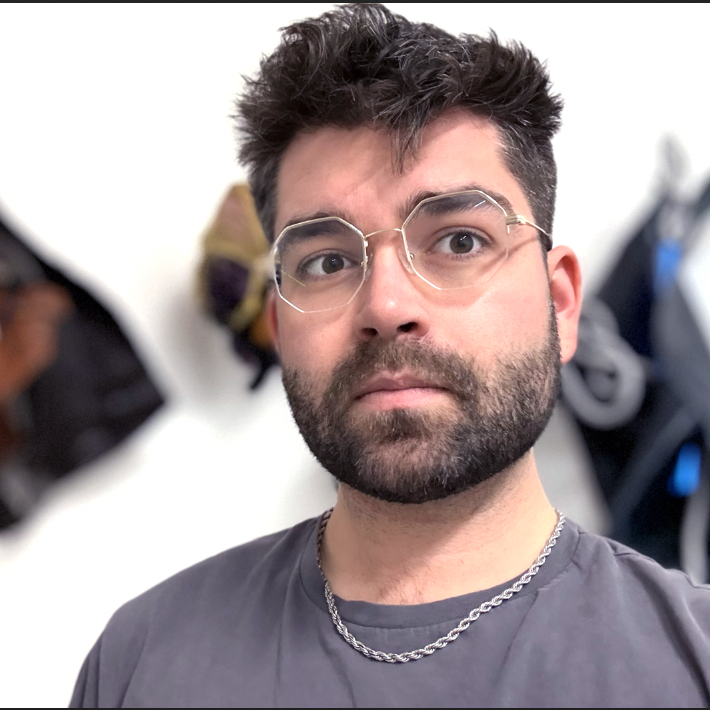
About the author: Samuel Schwindt is always looking for the maddest spectacles and vampiest explosions. A word|object|surface-smith, he originates from an evangelical community and contradictory motorcycle culture in Indiana (he left religion on highway 65 north to Chicago). Through his young-life he honed skills in wood and metal, and used his craft-history to receive a BFA in Studio Art from the School of the Art Institute of Chicago and an MFA in Interdisciplinary Art from University of Illinois at Chicago. Now, he works as commission-based leather-gear crafter, archivist, sculptor, curator, freelance writer, and educator.
